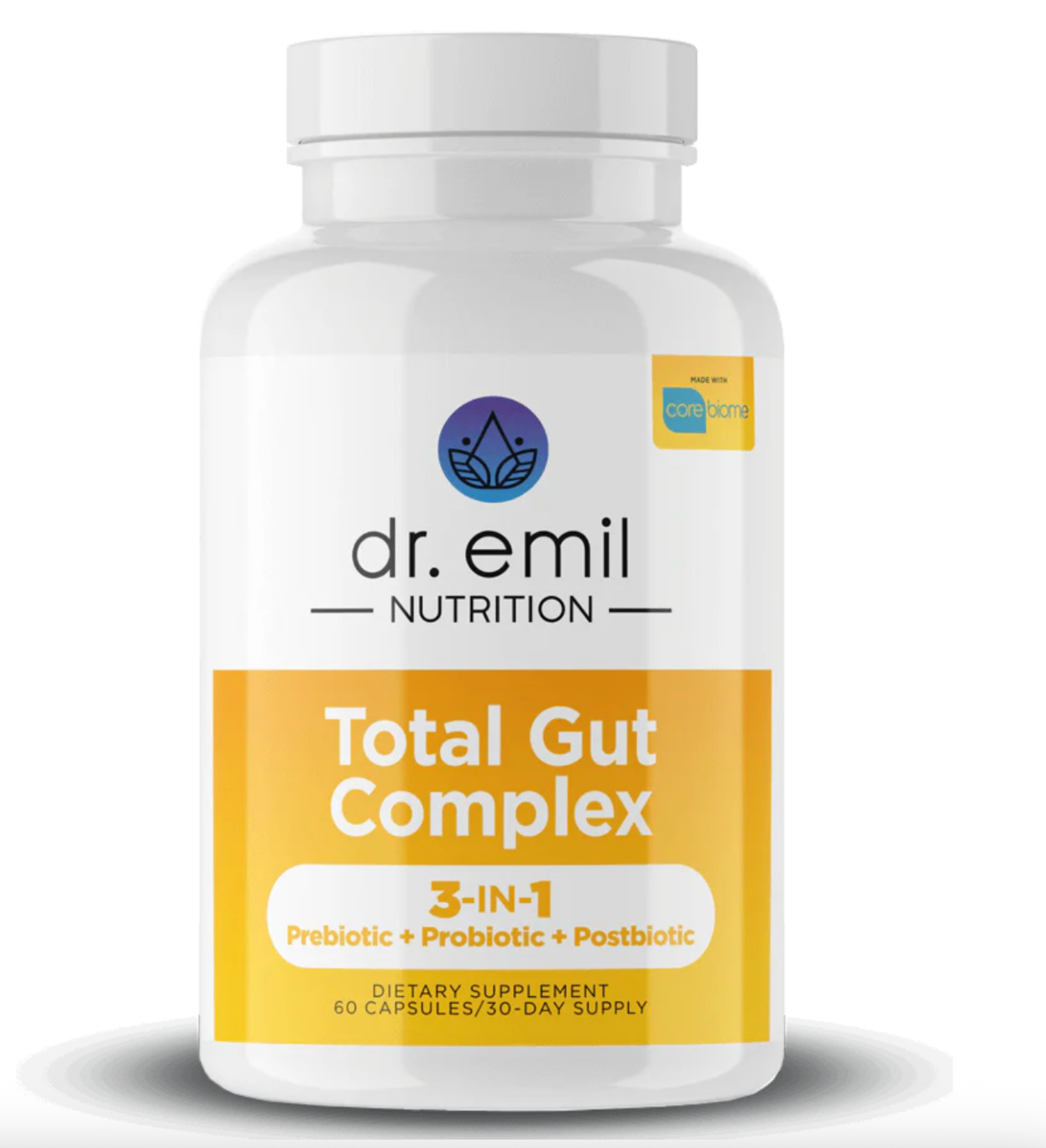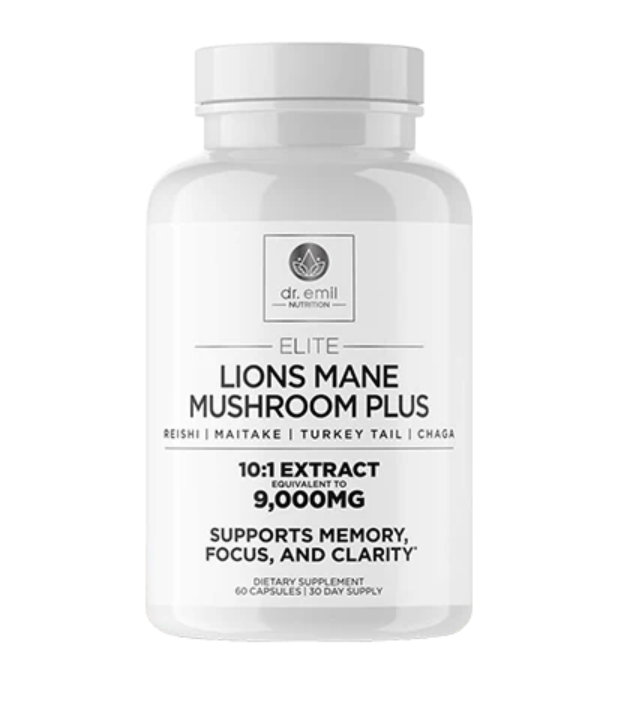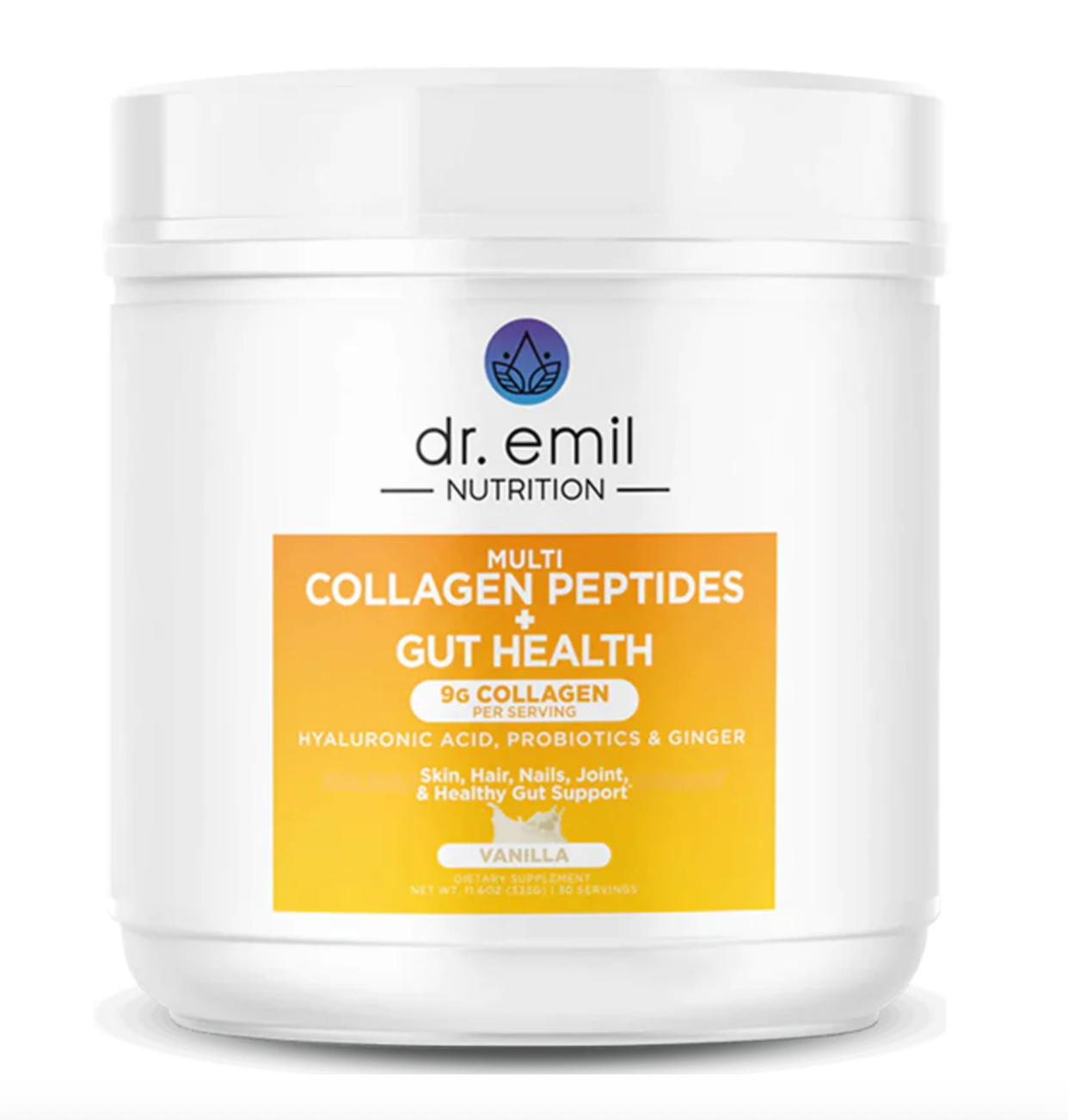Image courtesy of BaylorScott & White.
You have likely heard about probiotics, but there is an even smaller chance that you’ve also heard about slippery elm. Slippery elm works on the stomach, similar to the way probiotics do, but in a much different way. It produces a different set of benefits, and the benefits of slippery elm and probiotics combined would be presumably great when you list them side by side, but can these two gut healthy substances be safely taken together or should they always be taken separately?
What Is Slippery Elm?

Slippery Elm is a species of elm that is native to North America and used for its long list of medicinal benefits. It is a tree that is medium in size and can grow to over 50 feet tall. Its bark, gummy with a faint but recognizable odor, is what is used for medicine. It has been used as a herbal remedy for centuries, and is usually taken as an oral supplement. Many of slippery elm’s benefits come from a substance in it called mucilage. Mucilage is a substance that obtains a gel-like texture when it is mixed with water. So all you need to do is take slippery elm with water and let it get to work. The slippery texture it gets when it is wet is where the plant gets its name from.
Before slippery elm substances are even manufactured, the inner bark already feels slippery. This effect is then bottled and sold for your benefit. You can get similar benefits just from chewing the bark, but you can find slippery elm in a much more user-friendly supplement version at many stores. You can find it in some drugstores, and especially online. It is a great solution for anyone with a sore throat or irritated esophagus or intestines. Slippery elm can help with all of that and more.
Slippery Elm Benefits
Slippery elm has been used as a remedy for centuries, and it is because of the many benefits it is known to provide. Because of its slippery texture, it has been used to remedy several types of skin ailments. These ailments include burns, ulcers, wounds, boils, and skin inflammation. Slippery elm helps provide relief to people dealing with these ailments and helps them heal faster. The texture of slippery elm helps people suffering from these skin conditions feel some level of relief.
Slippery elm is most commonly taken orally to heal different stomach issues. It is the perfect texture to fight issues like sore throat, cough, diarrhea, ulcerative colitis, irritable bowel syndrome, and more. It is used to help with stomach issues that are both mild and debilitating, and it has an impact on both. Slippery elm has even been reported to help with stomach ulcers and constipation. Any stomach issue that can be reasonably helped with sticky slippery elm can be mitigated by using it.
And slippery elm is not only a tree bark that gets slippery when wet, it also encourages the body to produce more mucus. It causes reflux stimulation of the nerve endings in the gastrolienal tract, which causes it to secrete more mucus. Increased mucus production is something that protects the stomach and esophagus from acid and wall damage like ulcers. That is why slippery elm is used to help treat acid reflux and ulcers. It produces a slippery liquid of its own and also encourages the body to produce more of its own mucus.
How To Take Slippery Elm
Slippery elm is a remedy that you can take in capsule or powder form. Each version will be taken several times per day. When you take it in powder form, you will need to mix it in with some water and drink it up to three times per day. The capsule form will be taken on a similar schedule. You will take one with some water about three times per day. When taking slippery elm, you should also make sure to take it about two hours before you take any other supplement or medication to give it time to do its job.
Side Effects of Slippery Elm
Slippery elm won’t cause any major side effects for most people, but it can come with some major drawbacks for certain people. Some people can have allergic skin reactions like rashes and skin irritation from using slippery elm on their skin, but that is where it ends for the most part for the average person. The most severe possible symptoms that can be had using slippery elm involve pregnancy. There are conflicting theories on this, but it is said that slippery elm can be harmful to pregnant users. It can supposedly cause miscarriages if inserted directly onto the cervix, so many doctors will advise pregnant women not to use it at all just in case things go wrong.
Another effect of slippery elm is how it reacts with other supplements and medications. Because of the way slippery elm coats the walls of the stomach, it can affect the way other medications absorb into your system. That is why it is advised that you take slippery elm about two hours before you take other medications that need to be absorbed by the stomach. It needs time to get through your system before you can take other medications just so you can make sure they get absorbed properly.
What Are Probiotics?

Probiotics are live microorganisms that exist in certain foods to help promote good gut bacteria when they exist in high numbers.They act as food for the microflora in the human body. Probiotics are meant to maintain or even increase the good bacteria in your gut. The gut needs a mix of good and bad bacteria to run smoothly, but the bad bacteria can’t overrun the good bacteria or else things will go wrong. Probiotics help keep bad bacteria from growing out of control and causing stomach issues. Maintaining a healthy gut microbiome does a lot for your overall health, and it is why probiotics are so popular.
You can get probiotics from certain foods, but to really make sure you get what you need, you can get your probiotics from one of the many sources for it on the market. Probiotics can be found in multiple food products. Unlike with many supplements, you can go to the grocery store and find probiotics in drinks and snacks. You can get probiotics from yogurt, milk, and supplements. Some popular ways to get probiotics are through yogurt. You can get it from kefir, yakult, or activia. There are also probiotic drinks like sparkling waters and kombucha at grocery stores, so you get to decide exactly how you want to take your probiotics each day.
Benefits of Probiotics
Probiotics come with a long list of benefits that explains why you’ll find them in many forms at just about every grocery store. They improve your overall GI tract, something that has a large effect on the rest of the body and on your overall feelings of wellbeing. Probiotics help the body absorb nutrients from meals and medications and help break down bile and recycle it in the body. Bile is really important to the whole digestion process, and probiotics help keep it at the right levels.
Probiotics also have an impact on your immune system by working through the gut. It contributes to a healthy gut microbiome, which keeps certain stomach illnesses away. In an unhealthy gut microbiome, the harmful bacteria in the gut ends up outnumbering the helpful bacteria. That can lead to many kinds of stomach illnesses like small intestine bacterial overgrowth, ulcerative colitis, irritable bowel syndrome, and H. pylori, a bacteria that causes ulcers. Probiotics will help to keep these illnesses at bay and can help to improve them.
How To Take Probiotics
Probiotics exist most in leafy, high fiber foods, so you can add more probiotics into your diet by eating a lot more greens. But if you want to be thorough and make sure that you get your desired probiotic intake, you can get them through supplements and certain foods. One high probiotic food you can find in grocery stores is yogurt. Yogurt is one of the best probiotic sources on the market because it is made with live cultures. But not every yogurt in stores has probiotics. Most times the live cultures are killed during the cooking process, but there are some yogurt brands that focus primarily on providing probiotics and will be labeled so you can find them.
Another food that is filled with probiotics is kefir. Kefir is a fermented milk drink. It is yogurt-like in texture and made from cow’s or goat’s milk mixed with kefir grains. Kefir grains are cultures of lactic acid bacteria and yeast that resemble cauliflower. It contains lots of good bacteria and yeast, something that makes it a more diverse probiotic source than yogurt. Sauerkraut also offers probiotics as long as it is unpasteurized because pasteurization kills its live bacteria. Other sources of probiotics include kimchi, miso, kombucha, and buttermilk.
Filling your diet with the above foods can certainly be enough to provide your body with the probiotics that it needs. But if regularly eating probiotic foods isn’t something you can keep up with each day, or if you’re not a fan of the probiotic foods available to you, you can always get your probiotics in supplement form. These supplements can be found at many grocery stores and drug stores, both online and in person. In person, you can get it from GNC, Target, The Vitamin Shoppe, and Rite Aid. When ordering probiotic supplements online, you can order them from Amazon, Walmart online, and Dr. Emil.
Side Effects of Probiotics
Probiotics don’t usually come with side effects, but in some cases, they can cause some stomach upset. When probiotics release into the gut, they produce short-chain fatty acids. short-chain fatty acids can cause a bout of diarrhea if your stomach receives a sudden flood of them. This can be avoided if you don’t take way too many probiotics all at once. Other side effects you can experience if your gut receives a sudden influx of too many probiotics include upset stomach, gas, and bloating. All these side effects will be relatively mild and will go away in very little time.
Can You Take Slippery Elm And Probiotics Together?
It is often suggested that people take slippery elm on its own about two hours before they take anything else because of the effect it has on other medications. Slippery elm coats the stomach and can prevent the absorption of other substances, but it’s a different story when you want to take it with probiotics. Probiotics work in the gut and don’t need to be absorbed into the gut lining to do so. That makes it work great even when used alongside slippery elm, a substance that doesn’t mix well with most others.
You can take a slippery elm capsule right alongside a probiotic capsule, or you can mix slippery elm powder into a glass of water and drink it alongside a probiotic drink like kefir. However you combine slippery elm and probiotics, they will work together excellently. Both of these substances help out your digestive system in several similar and different ways, so taking them together only does double duty for your gut health.
More Gut Health Supplements for Your Happiest Microbiome Ever
The gut health options don’t stop at slippery elm – from daily greens powers for gut health to easy-to-take probiotic capsules, there are plenty of gut health supplements out there to support your microbiome. Dr. Emil supplements are derived from natural ingredients and formulated by a doctor, so you can be sure you’re getting a quality product. Here are a few of our gut health bestsellers to consider!
Dr. Emil Nutrition Total Gut Complex

Explore Dr. Emil Nutrition Total Gut Complex >>
Dr. Emil Nutrition Total Gut Complex is a complete, all-in-one formula that’s all about keeping your digestive system running smoothly. It combines probiotics and prebiotics to help grow and maintain healthy gut bacteria, while supporting proper digestion and helping your body absorb nutrients more effectively.
The formula also includes digestive enzymes to break down proteins, fats, and carbs, which can help reduce bloating and discomfort after meals. On top of that, the natural ingredients in Total Gut Complex work to strengthen your intestinal lining, helping protect against inflammation and harmful bacteria.
With consistent use, Total Gut Complex can support smoother digestion, better bowel regularity, and even a stronger immune system thanks to a healthier gut.
TGC is a great daily supplement if you’re looking to give your digestive system a little TLC!
Dr. Emil Berberine Plus

Explore Dr. Emil Nutrition Berberine Plus >>
Dr. Emil’s Berberine Plus is a powerhouse supplement designed to support gut health, blood sugar balance, and overall metabolic wellness. Packed with high-quality berberine and complementary natural compounds, it helps regulate glucose levels while promoting a healthy gut environment.
Berberine works at the cellular level to support your body’s natural insulin response and maintain stable blood sugar. At the same time, it can help reduce inflammation in the gut, strengthen the intestinal lining, and support healthy digestion—making it a great ally for overall digestive wellness.
With regular use, Berberine Plus can help improve energy levels, support healthy weight management, and encourage a balanced gut microbiome. It’s an ideal choice for anyone looking for a natural, science-backed way to support metabolic and digestive health.
Dr. Emil Nutrition Lion’s Mane Mushroom Plus

Explore Dr. Emil Nutrition Lion’s Mane Mushroom Plus >>
Lion’s Mane Mushroom Plus supports gut health by promoting a balanced microbiome and reducing digestive inflammation.
Dr. Emil’s Lion’s Mane Mushroom Plus is a gut-friendly supplement that helps your digestive system run more smoothly while supporting overall wellness. Think of it as a little boost for your gut bacteria—Lion’s Mane acts as a prebiotic, feeding the good bacteria that keep your microbiome balanced and your digestion on track.
It also helps protect your gut lining, which is key for preventing irritation and making sure your body absorbs nutrients the way it should. By calming inflammation and oxidative stress in your digestive tract, it creates a healthier environment where both your gut bacteria and digestion can thrive.
The benefits don’t stop there. Lion’s Mane is known to support your immune system and even help your brain stay sharp, making it a holistic supplement for anyone looking to feel their best from the inside out. Regular use can help you feel lighter, less bloated, and more balanced overall—gut, mind, and body.
Dr. Emil Nutrition Collagen Peptides + Gut Health

Explore Dr. Emil Nutrition Collagen Peptides + Gut Health >>
Dr. Emil’s Collagen Peptides Plus Gut Health is all about keeping your digestive system strong from the inside out. Collagen is a key building block for your gut lining, helping to repair and reinforce your intestinal walls so everything stays tight and healthy. That means less permeability, a stronger gut barrier, and better protection against inflammation.
This formula also includes gut-friendly nutrients that work together to support digestion and nutrient absorption, helping you feel lighter, less bloated, and more comfortable after meals. By taking care of your gut lining and supporting your beneficial bacteria, it helps keep digestion smooth and your gut ecosystem balanced.
And the best part? You’re not just helping your gut—collagen also supports healthy skin, joints, and overall wellness. It’s an easy, natural way to strengthen your gut while giving your whole body a little extra love every day.
That’s a wrap on our guide to taking slippery elm with probiotics!
Probiotics and slippery elm are different natural substances that have a positive impact on the gut when made into a regular part of someone’s diet. Slippery elm soothes the gut walls while probiotics build up the good bacteria inside of it, and there are several good reasons to take them both together. When it comes to slippery elm and probiotics, you can only benefit by combining them.






